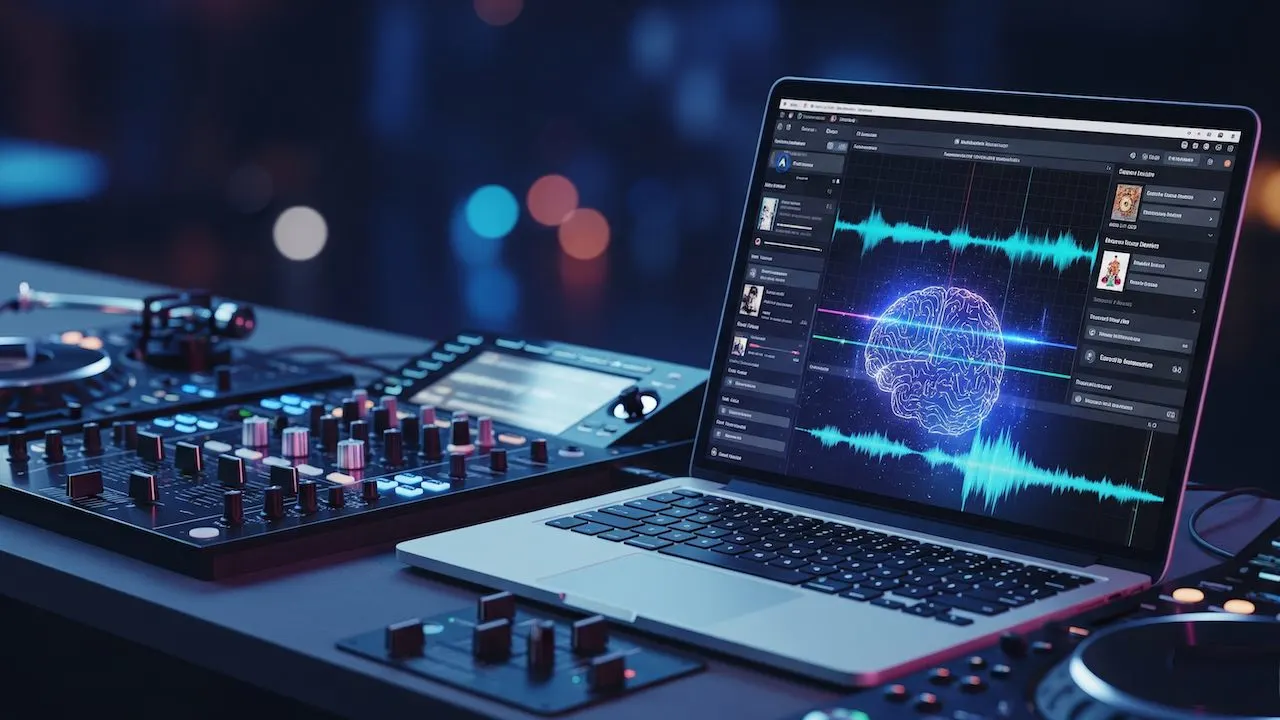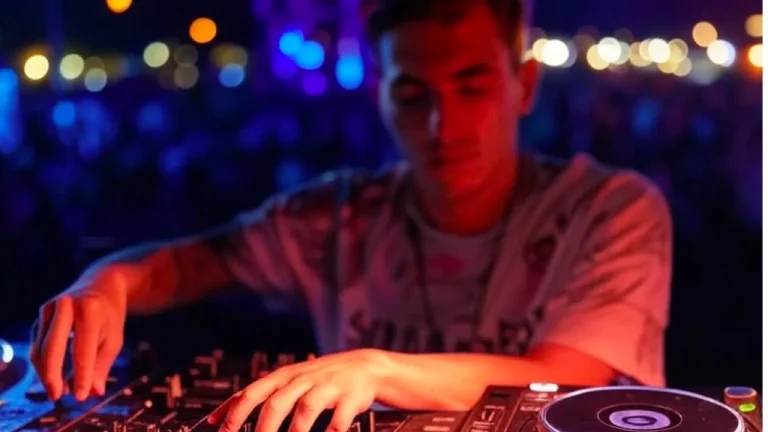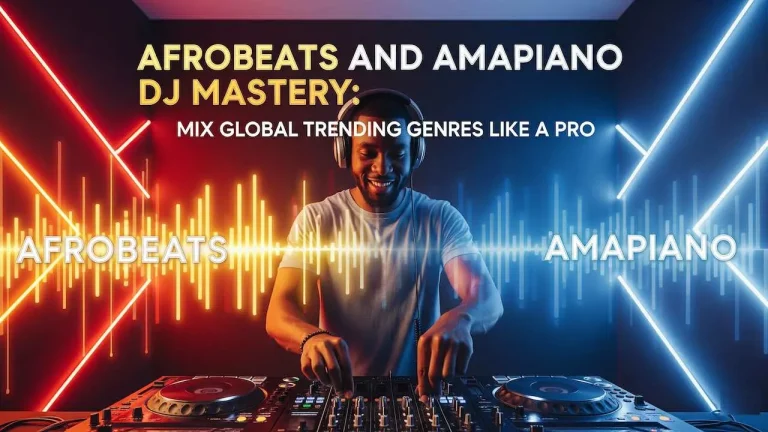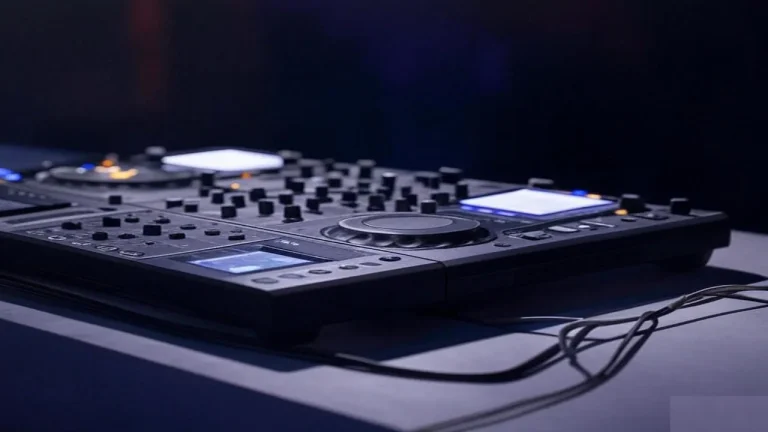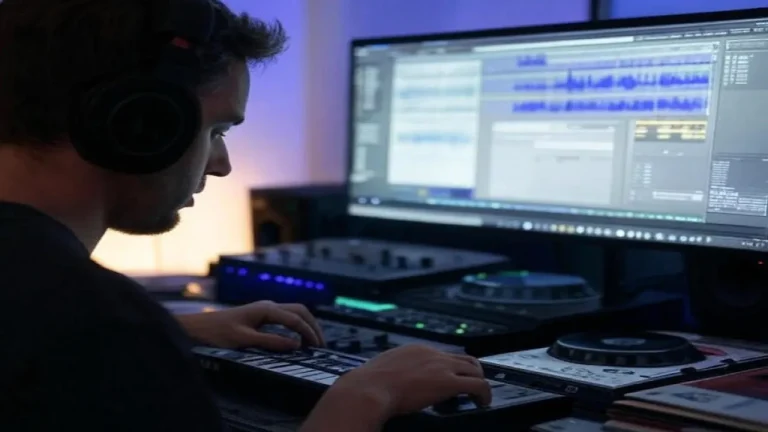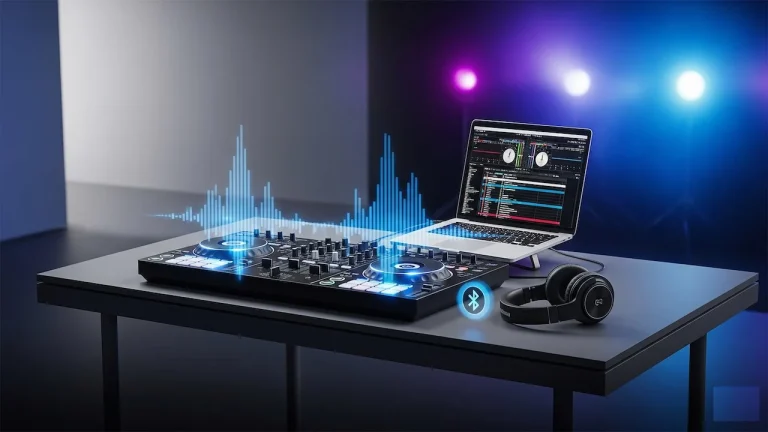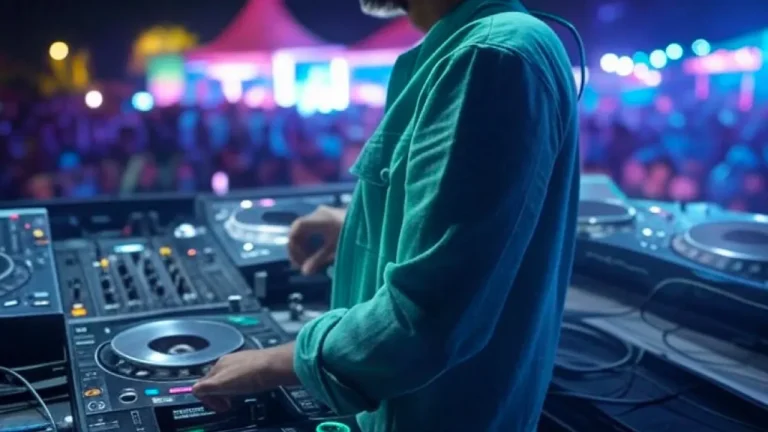AI-powered track selection transforms how DJs curate and perform with intelligent algorithms that analyze audio characteristics, automatically create playlists, and seamlessly blend tracks using Neural Mix Pro technology. This advanced system enables real-time stem separation, smart BPM matching, and harmonic mixing for professional DJ performances.
What is AI-Powered Track Selection for DJs
AI-powered track selection utilizes machine learning algorithms to analyze musical elements such as tempo, key, energy levels, and genre characteristics. The technology examines audio waveforms and identifies optimal mixing points between songs, creating smooth transitions that maintain consistent energy flow throughout DJ sets.
Modern AI systems like djay Pro AI process over 100 million songs from streaming platforms, providing instant access to vast music libraries. The algorithms evaluate factors including:
- BPM synchronization patterns
- Harmonic compatibility analysis
- Energy curve matching
- Genre classification accuracy
- Vocal and instrumental stem isolation
Neural Mix Pro Technology Explained
Neural Mix Pro represents breakthrough audio separation technology that isolates individual stems from complete tracks in real-time. This AI system separates drums, vocals, bass, and melodic instruments into distinct controllable elements without requiring pre-processed stem files.
| Neural Mix Feature | Capability | DJ Application |
|---|---|---|
| Vocal Isolation | Real-time vocal extraction | Acapella mixing and karaoke creation |
| Instrument Separation | Individual instrument control | Custom remix creation and mashups |
| Drum Isolation | Percussion element control | Beat matching and rhythm layering |
| Bass Extraction | Low-frequency isolation | Sub-bass management and EQ control |
The technology processes audio files at 44.1 kHz sample rates with minimal latency, maintaining audio quality while providing surgical precision in stem control. DJs can adjust individual stem volumes, apply effects to specific elements, and create unique remixes during live performances.
Smart Playlist Generation Techniques
Smart playlist generation employs AI algorithms to automatically curate track sequences based on multiple criteria and user preferences. The system analyzes listening history, crowd response patterns, and musical attributes to create cohesive playlists that maintain optimal energy progression.
Effective smart playlist creation involves configuring filters for:
- Genre specifications and subgenre matching
- BPM ranges for tempo consistency
- Key compatibility for harmonic mixing
- Energy level progression patterns
- Artist diversity and track popularity
- Release date preferences and eras
Advanced Playlist Algorithms
Machine learning models analyze audio fingerprints to identify tracks with similar sonic characteristics. These algorithms process spectral analysis data to match songs with complementary frequency profiles and rhythmic structures.
Popular AI playlist tools include MusicMate for track discovery, djay Pro AI for automated mixing, and Deej-AI for deep learning-based playlist creation. Each platform utilizes different analytical approaches while maintaining focus on seamless musical flow.
Setting Up AI Track Selection Systems
Configuration begins with connecting music streaming services and importing local libraries into AI-powered DJ software. Users must authenticate Apple Music, Spotify, or other streaming platforms to access comprehensive catalogs for AI analysis and playlist generation.
| Setup Step | Required Action | Time Investment |
|---|---|---|
| Music Library Import | Connect streaming services and local files | 15-30 minutes |
| AI Preference Training | Rate tracks and define style preferences | 2-3 hours |
| Smart Filter Configuration | Set BPM ranges, keys, and genres | 30-45 minutes |
| Hardware Integration | Connect controllers and audio interfaces | 20-40 minutes |
AI systems require initial training periods where DJs rate tracks, skip songs, and provide feedback to improve recommendation accuracy. The more interaction data provided, the better the AI becomes at predicting successful track combinations and crowd preferences.
Optimizing AI Performance
Performance optimization involves regularly updating music libraries, refining filter criteria, and analyzing mix success rates. DJs should monitor which AI-suggested transitions receive positive crowd responses and adjust algorithmic weights accordingly.
Key optimization strategies include creating multiple playlist templates for different venues, adjusting energy curve preferences based on time of day, and incorporating crowd demographic data into selection algorithms.
Professional DJ Workflow Integration
Successful AI integration requires balancing automated recommendations with human creativity and crowd reading skills. Professional DJs use AI as a creative enhancement tool rather than complete replacement for musical intuition and performance experience.
Effective workflow integration involves:
- Pre-loading AI-curated playlists for backup options
- Using real-time AI suggestions during live performance gaps
- Combining AI track selection with manual curation
- Leveraging Neural Mix Pro for creative remixing opportunities
- Analyzing post-performance data to improve future selections
Live Performance Applications
During live performances, AI systems provide instant track suggestions based on current energy levels and crowd response indicators. DJs can accept or reject AI recommendations while maintaining creative control over set direction and musical narrative.
Real-time Neural Mix Pro capabilities allow for spontaneous remixing, vocal drops, and instrumental extensions that respond to crowd energy without requiring pre-planned edits or additional equipment.
Troubleshooting Common AI Issues
AI track selection systems occasionally produce mismatched recommendations or fail to recognize specific musical characteristics. Common issues include incorrect BPM detection, genre misclassification, and poor harmonic matching suggestions that require manual intervention.
Resolution strategies include:
- Manually correcting metadata tags for improved AI accuracy
- Creating custom genre classifications for unique music styles
- Adjusting AI sensitivity settings for different musical contexts
- Regularly updating software to access improved algorithms
- Maintaining backup manual playlists for critical performances
Neural Mix Pro Limitations
While powerful, Neural Mix Pro technology has limitations with certain audio formats and production styles. Heavily compressed tracks, lo-fi recordings, and complex orchestral arrangements may not separate cleanly into distinct stems.
DJs should test Neural Mix Pro compatibility with their music libraries and identify tracks that provide optimal stem separation quality for live performance applications.
People Also Ask
AI track selection achieves approximately 85-90% accuracy for basic BPM and key matching, with harmonic compatibility reaching 75-80% success rates. Professional DJs report that AI suggestions work well for 60-70% of transitions, requiring human intervention for creative or complex mixing scenarios.
Neural Mix Pro supports most common audio formats including MP3, WAV, FLAC, and AAC files. The technology performs best with high-quality audio files above 256 kbps bitrates, while heavily compressed or low-quality recordings may produce less precise stem separation.
AI DJ software requires minimum system specifications including 8GB RAM, multi-core processors, and dedicated graphics cards for optimal performance. Professional setups benefit from 16GB+ RAM and SSD storage for faster audio processing and library access.
AI playlist generation excels at identifying technical compatibility factors like BPM and key matching, while manual curation provides superior emotional storytelling and crowd reading capabilities. The most effective approach combines AI efficiency with human creativity for optimal results.
AI cannot replace essential DJ skills like crowd reading, performance presence, and creative mixing techniques. AI serves as a powerful tool for track discovery and technical assistance while human DJs provide artistic vision and live performance energy.
AI systems typically require 20-30 hours of usage data to develop accurate personal preference models. DJs should expect gradual improvement over 2-3 months of regular use, with optimal performance achieved after 6 months of consistent interaction.
